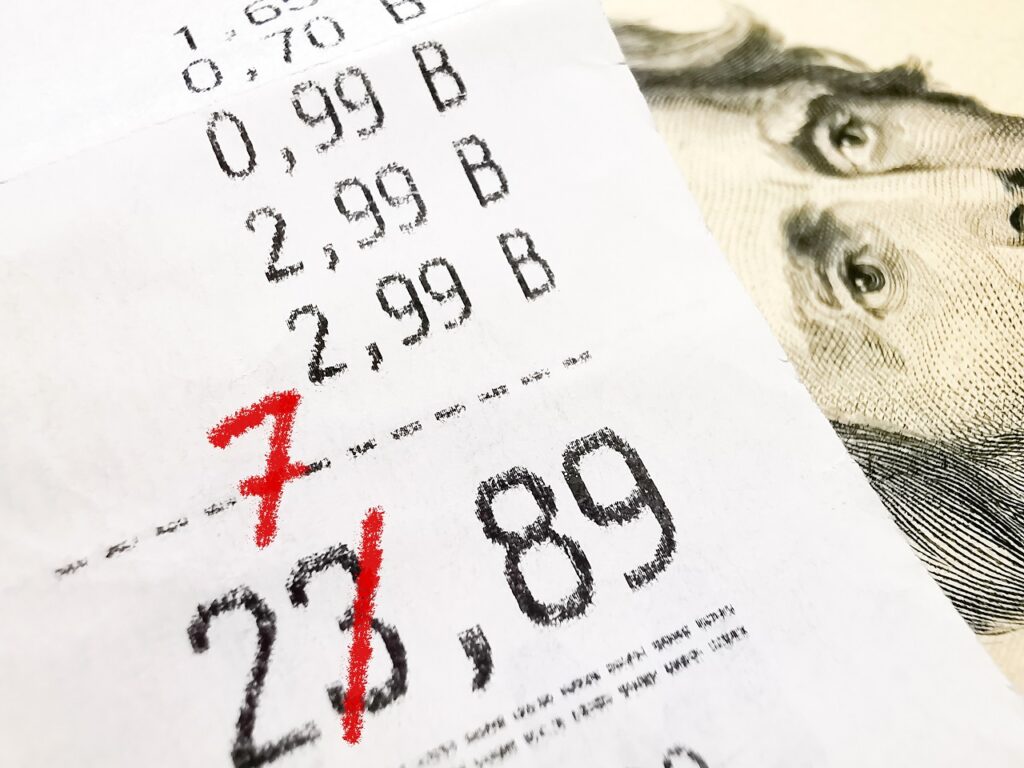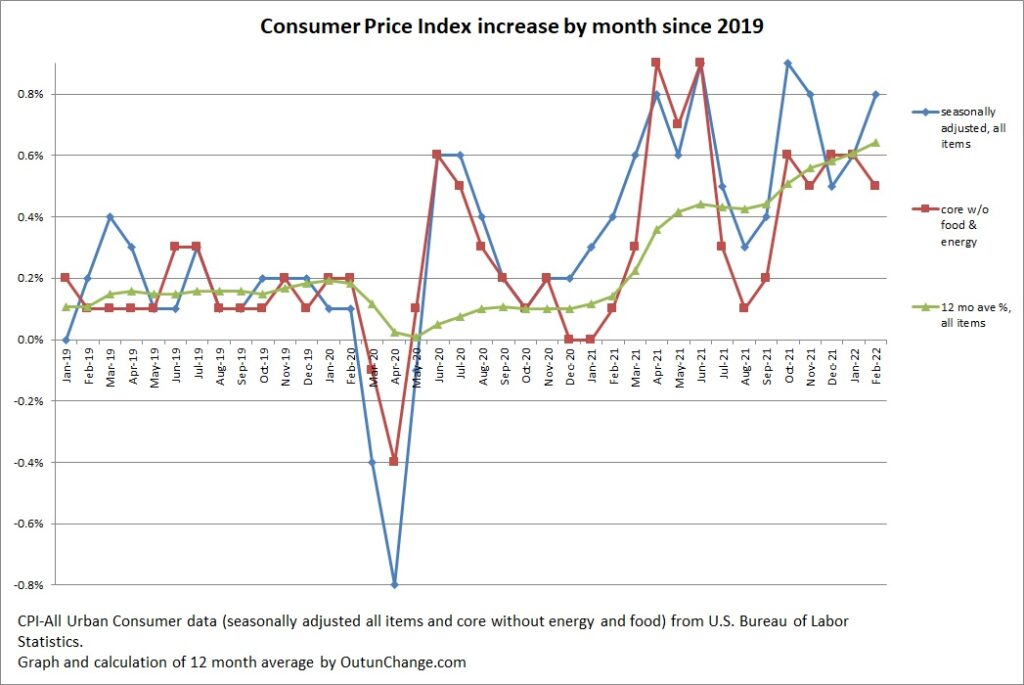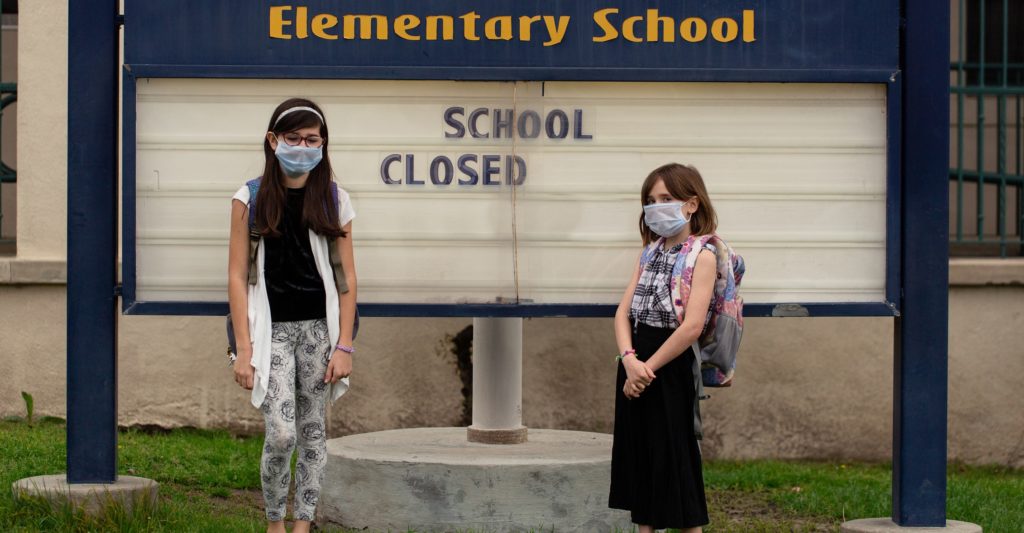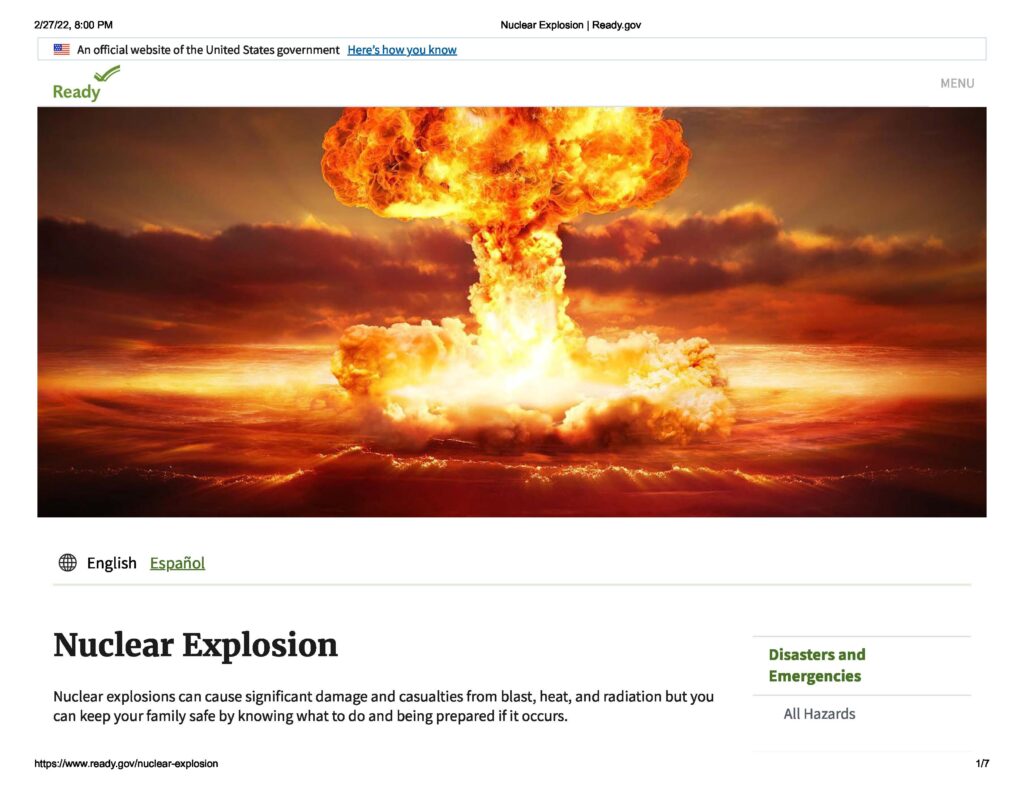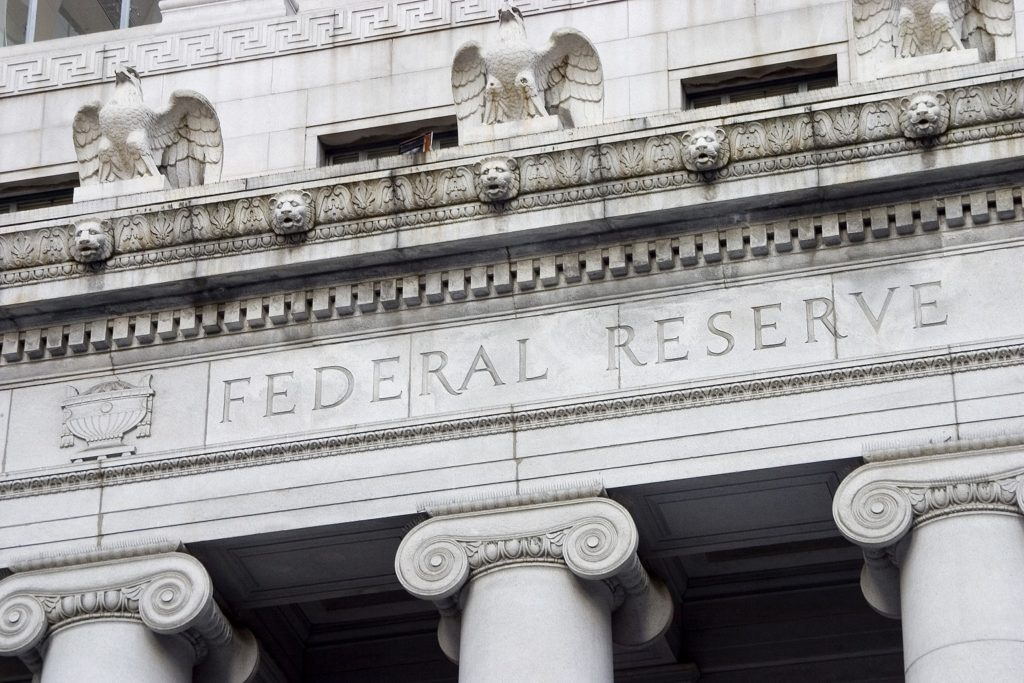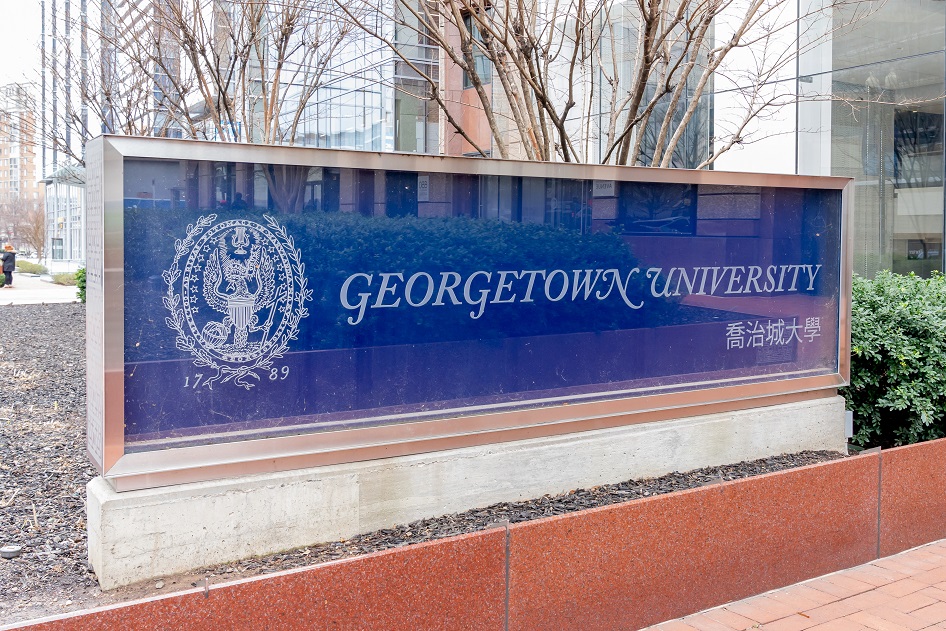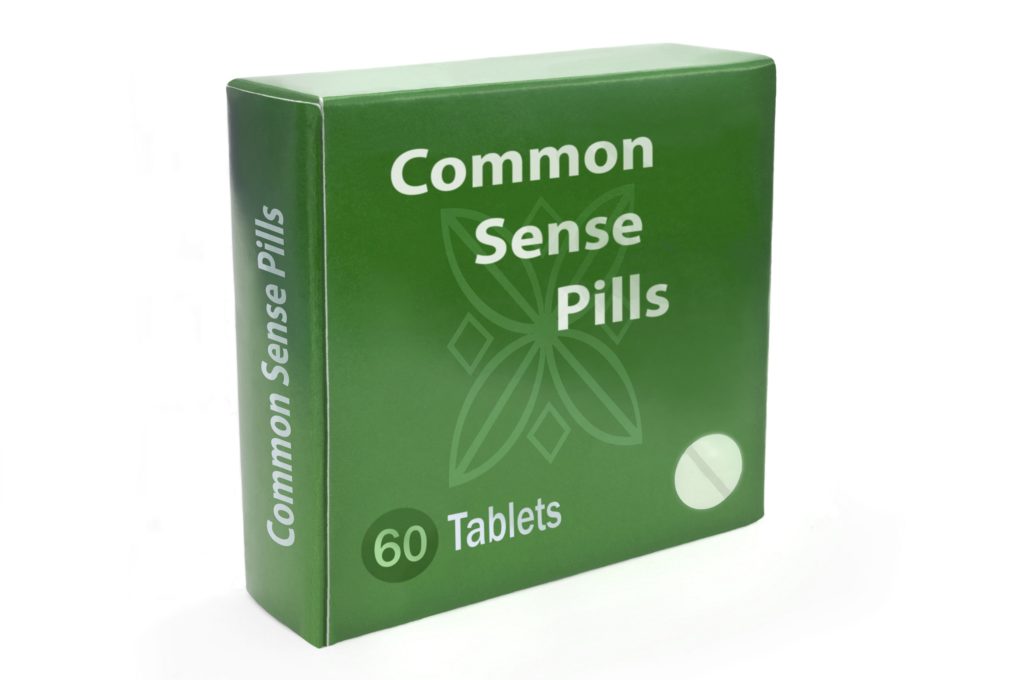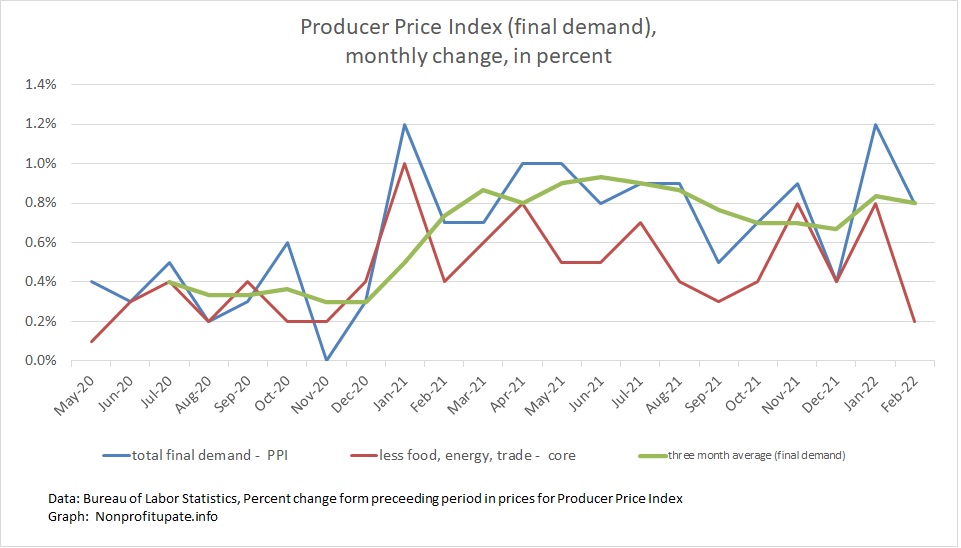
The Producer Price Index (PPI) rose 0.8% in February. The previously reported 1.0% rise in January was revised to 1.2%. So that is actually a cumulative increase of 1.0% in February
Keep in mind the prior monthly increases PPI are revised as needed. This is in contrast to CPI which is not revised.
In February, core PPI, without food, energy, & trade, was up 0.2% in February with January revised downward from 0.9% to 0.8%.
For background, the Bureau of Labor Statistics provides a description of PPI:
“The Producer Price Index (PPI) is a family of indexes that measures the average change over time in selling prices received by domestic producers of goods and services. PPIs measure price change from the perspective of the seller. This contrasts with other measures, such as the Consumer Price Index (CPI), that measure price change from the purchaser’s perspective. Sellers’ and purchasers’ prices may differ due to government subsidies, sales and excise taxes, and distribution costs.”
So the PPI measures prices received by producers for their goods and services. Those costs roll into the goods and services you and I buy as end consumers.
This means the increases in wholesale prices, which show a lot of inflation, are heading our way as those increases work themselves into the CPI.
Graph at the top of this post shows the monthly price change for total demand with separate line for total demand goods and total demand services.
With revisions, the year over year increase in PPI is 10.0% in February and January, which is only a slight increase from 9.9% in December and November and the increases were just under 9.0% for October back to August.
Take a look at the year over year change in final demand and core change which means without food, energy, and trade.
(more…)